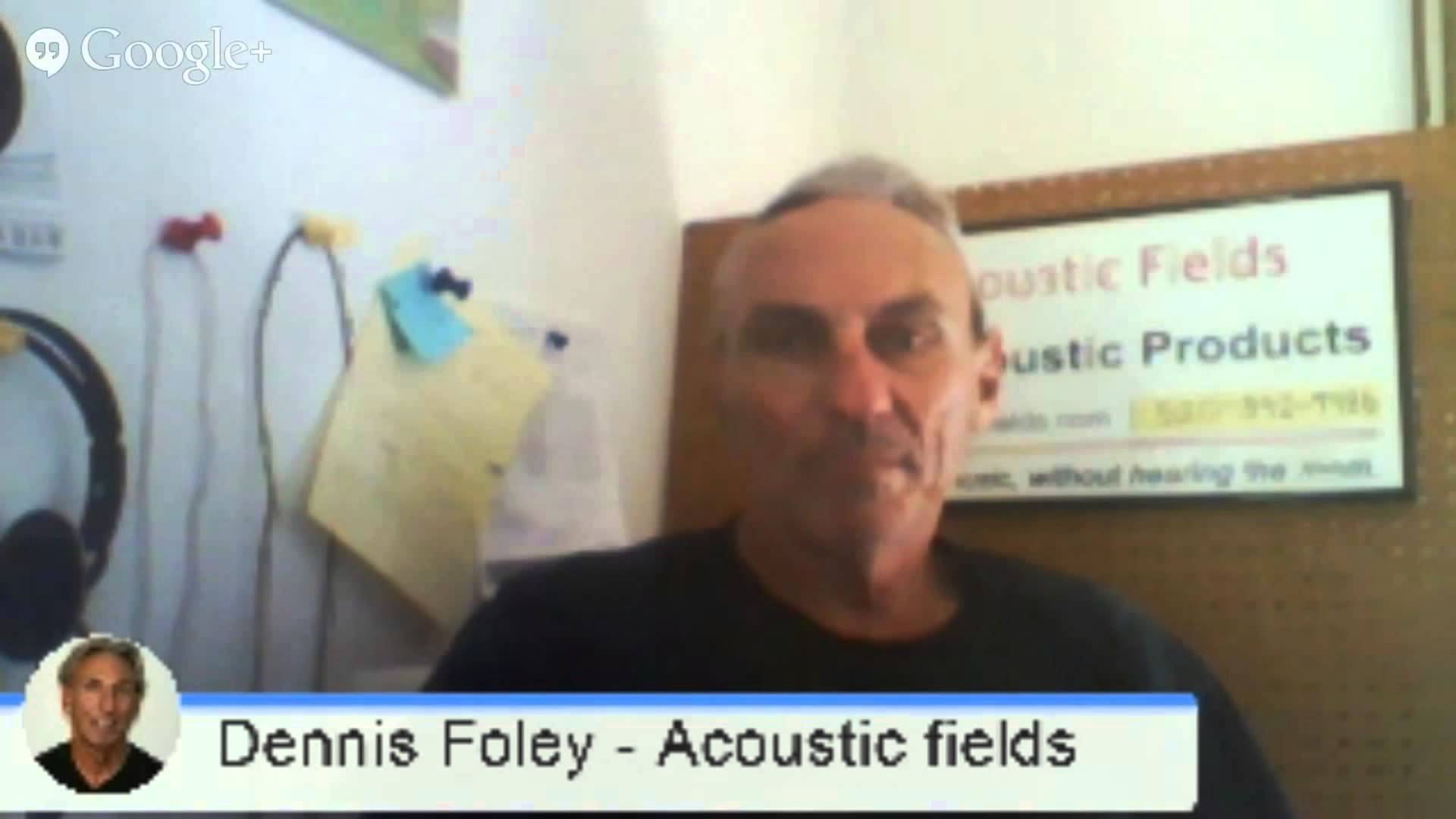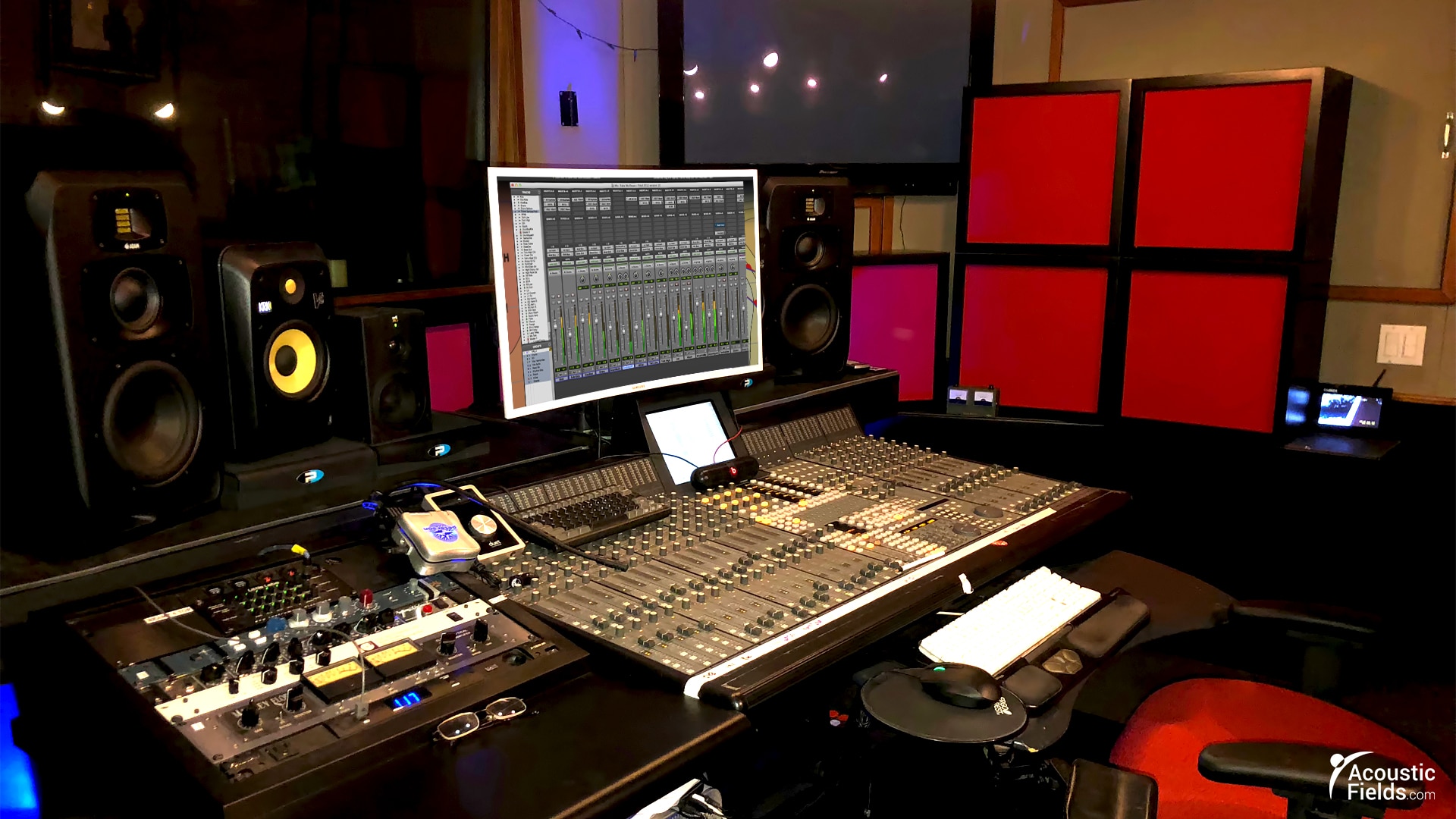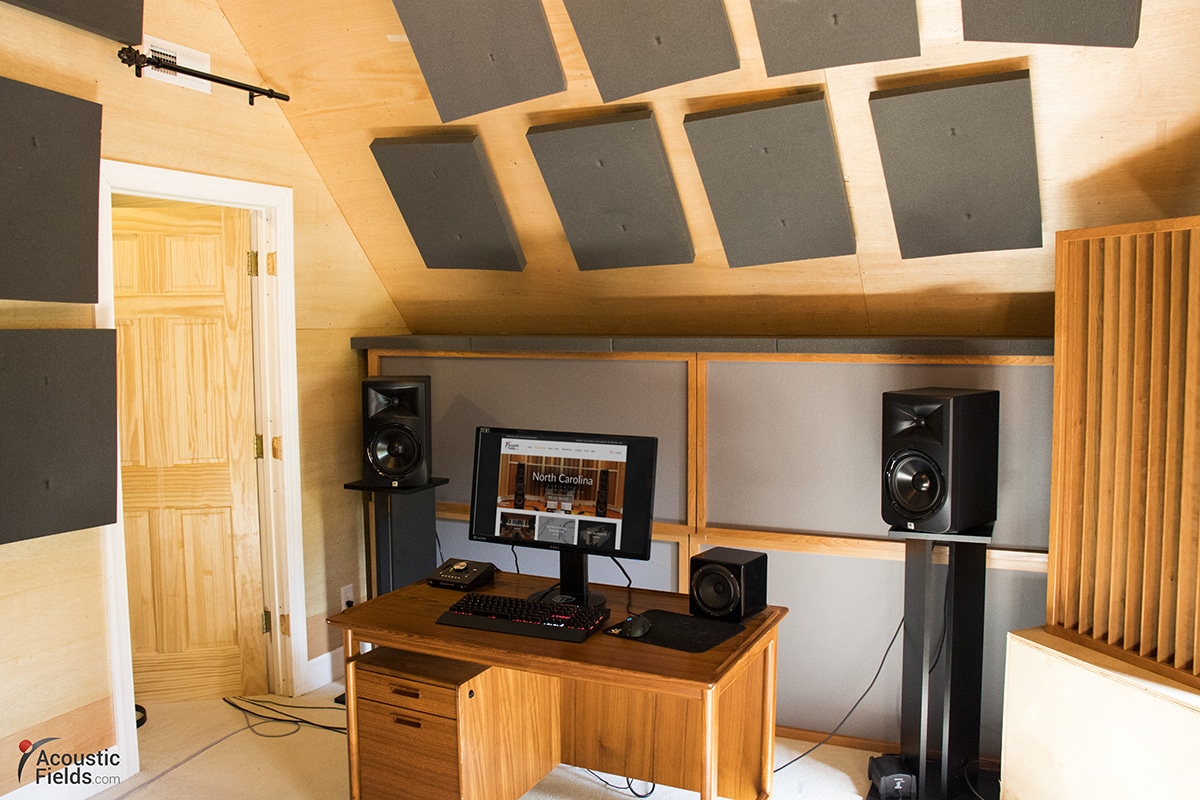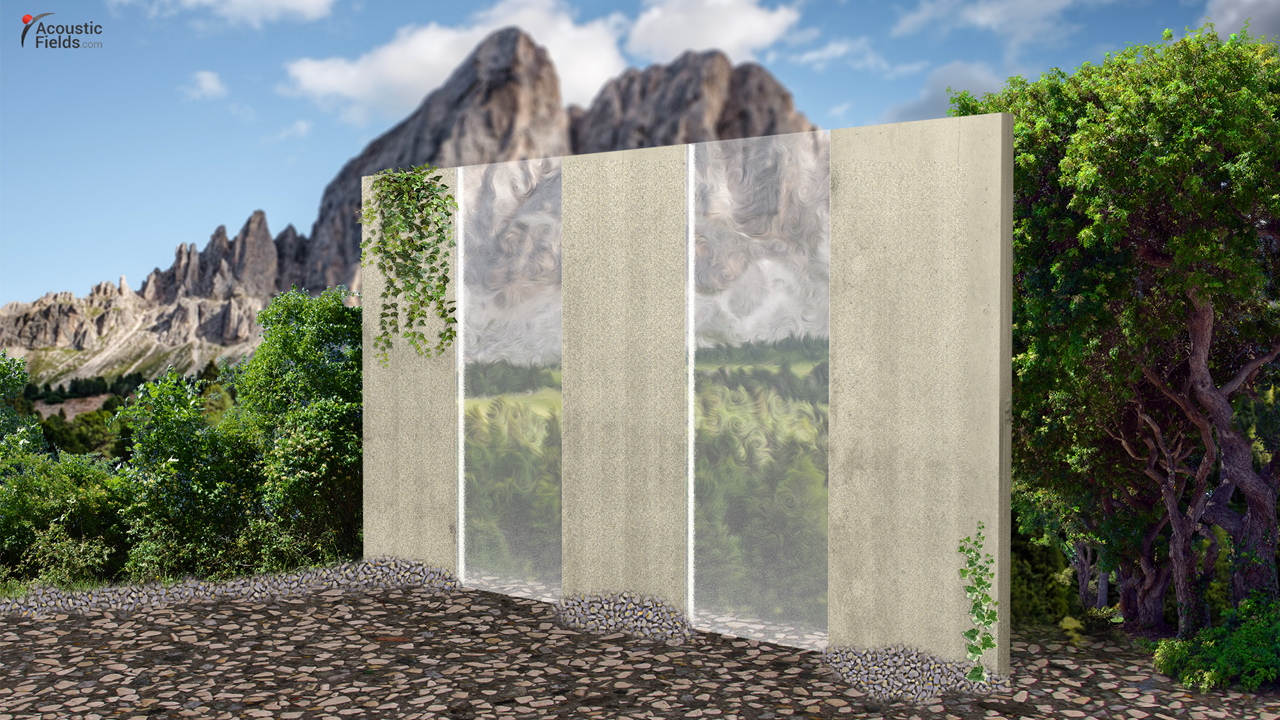There have been many advancements in vocal booth design and treatment types. We have been a pioneer in using quadratic diffusion in small vocal booths. Diffusion is a technology to make small rooms sound larger. We have updated this blog on 11/12/19 to reflect the last 8 years of our experience in acoustic treatment for a vocal booth and the application of vocal booth treatment types.
In the below video interview I was asked “What is the best acoustic treatment for a vocal booth?”. My answer is that here’s another issue that we have to be concerned of when it comes to acoustic treatment. Using superlatives like best, good, better, really don’t define anything for us in terms of what we’re trying to accomplish. There is no best treatment, everything is variable. Once again depending on usage. What are you trying to accomplish? What are you trying to achieve in your room?
Usage, Usage, Usage
We must examine the usage requirements in our vocal booth. If it’s one vocalist, we need a certain size room. If it’s two vocalists, we need a different size room. Is our vocalist a male or female? Male voice frequency ranges are generally one to two octaves lower in register than the female voice. These lower frequencies require a larger room size and volume. What will be the pressure level the vocalist is going to perform at? Will they be doing voice over work? Will they be singing? If singing will it be metal, rap, or whatever type. Each musical genre has different pressure outputs from the performers. The room must be able to handle that energy amount (amplitude) over different usages. It all begins with the proper room size and volume.
If our vocal booth is for a male voice over usage, we are dealing with pressure levels of around 85 dB SPL maximum. You always design your vocal booth with the maximum pressure that is going to be used within that room. A metal singer will produce more sound pressure than a voice-over artist. The room must be able to handle the maximum pressure requirements of your particular vocal booth usage.
Room Dimensions
For male voice usage, we use 8′ as our starting height for the ceiling. This is a standard height for most rooms in North America. Should we use a higher ceiling if possible? The answer is yes but with some caveats. The floor to ceiling dimension produces the most damaging reflections at the microphone position. Higher ceiling heights will reduce the time signature of those reflections by increasing the distance from the ceiling to the microphone. We have to be careful about getting too high of a ceiling and causing more issues with higher reverberation (reflection) times that will require more vocal booth acoustic treatment. Width dimensions should be no less than 7′ and lengths can be 9 – 11′. Once again, dimensions of our vocal booth depend on what we are going to use it for and who is using it.
Vocal Booth: Foam and Diffusers
We’re actually working on a project now for vocal rooms and we’re starting with absorption and then slowly over time we’re adding diffusion in so that the end-user can get a handle on both technologies. It’s a long learning curve because first, it has taken Brenda about four or five months to really figure out what the true sound of the room is.
Brenda’s Studio 21 is located on the 23 third floor of a high rise in San Diego. The high rise is located downtown San Diego. We have airplanes landing at the airport. We have helicopters flying overhead. We have garbage trucks in the alleys and streets below. Our first concern with the project was noise. Noise will destroy all your efforts when it comes to your vocal booth and vocal booth treatment types. We must have the lowest noise floor within our vocal booth as possible. This is a requirement because voice requires a low noise floor so that ever nuance of the voice can be heard by the microphone. There is only voice and noise in our vocal booths. There are no instruments or other sound sources that we are competing against.
Click Here to see the project page for Brenda’s Studio 21
Noise Floors
Brenda’s noise issues had to be measured over a seven day time period. You want and need noise measurements over seven days so that you can design for the highest sound pressure at any day. If you design the walls for the worst noise case over the week that you will face, you are then free to use the room at any time. using the room at all times is critical for creative people. Once you get an idea, you must have the ability to act upon that creative urge whenever it strikes. The last thing you want to think about when a creative urge occurs is can I use my room now or is it too noisy on Tuesdays.
Once you have quantified and qualified the noise measurements, you can now build the appropriate barrier technology to reduce noise transmission. Measurements are critical since with noise and the barrier technology requirements it demands, you do not want to spend any more money than you have to. You want to address all the issues within your noise time study but not overspend doing it. It is best to save your budget for vocal booth acoustic treatment.
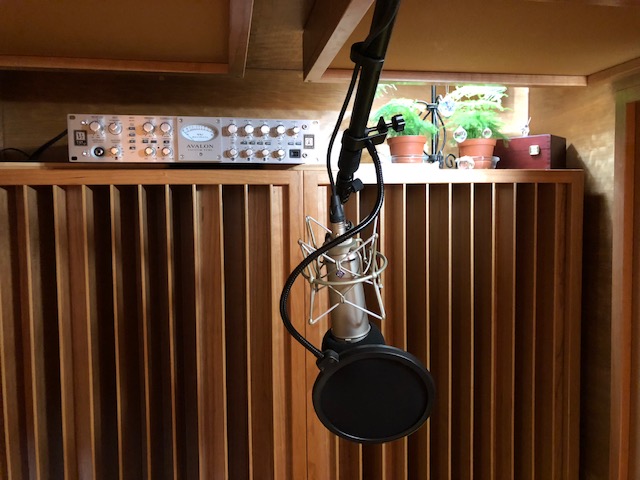
Quadratic Diffusion In Brenda’s Vocal Studio
Treatment Types
Our first treatment goals are minimizing reflections from the vocal booth wall surfaces. We have two types of energy to deal with. We have the direct energy from our mouth to the microphone and we have the vocal booth room sound which is the reflections from the wall surfaces. We have two technologies that allow us to treat the reflections. We have absorption and diffusion. Absorption decrease the strength or amplitude of the reflection and diffusion reduces the impact of the reflected energy by spreading the energy out into a sound field of your choosing. Absorption technology must have the proper rates and levels of absorption for music and voice. Music and voice are different than noise. Our goal with voice is to minimize the impact of the reflection without over absorbing too much energy.
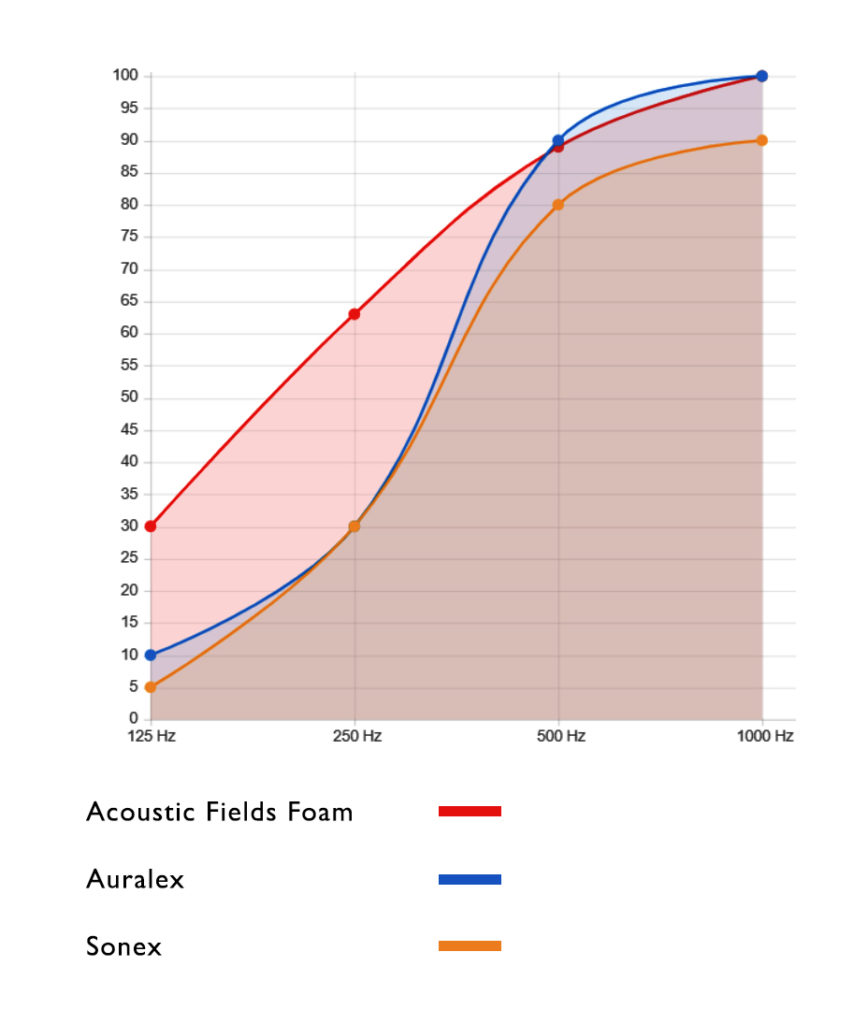
Acoustic Fields Foam Performance
Here is a video of Ken one of our clients explaining this process:
Diffusion is our second treatment type. Stay with quadratic diffusion. It is the only true diffusion type that creates a diffuse sound field. It is predictable and consistent in its performance. A quadratic diffuser has a frequency response just like a microphone or speaker. The distance from the microphone to the wall surface area must be calculated and the correct diffuser type with the proper frequency range must be selected to match all the requirements. The proper diffusion sequence must take into consideration the size of the vocal booth, the distance from the walls to the microphone and a host of other variables.
Sonic Goals
Will we be using some blend of absorption and diffusion? It depends on the final sonic product that the user wants to create. If you are after a dry vocal presentation you will use absorption carefully. choosing the correct rate and level of absorption for your vocal booth acoustic treatment. Our studio pro foam was developed for music and voice, not noise. Most foam technologies are designed for noise, not music and voice. They are noise designed to absorb as much energy as possible to reduce noise frequencies and amplitudes. Music and voice are different than noise and require certain rates and levels from 125 – 500 Hz.
Acoustic Fields Studio Pro Foam: https://www.acousticfields.com/product/acoustic-foam/
Plan It Out
Sit down and say “What am I trying to do with my room? What am I trying to achieve? What are my goals?” and then design the room to achieve your goals. Measure the noise around the room for over seven days. You must understand the amount of noise you are competing against inside your room. Don’t do it the other way around. Don’t take the room and let the room tell you what your goals are going to be. You must decide what your final product will sound like. You must take control of the noise so you have the lowest noise floor inside your room so you are not competing with noise from any outside source.
You’ve got to step back a little bit, take a deep breath and, just because you have space, don’t think that it will achieve what you want to achieve especially if you don’t know what you want and what you are up against when it comes to noise issues. Step back, take some time and figure out what your acoustical goals are. If you have an existing room, we may be able to work with the existing room that you have or we may not. When it comes to vocal booths and vocal booth acoustic treatment you must plan first then execute. People do not plan to fail, they fail to plan.
In Summary
I hope this discussion helps you find the correct acoustic treatment for your vocal booth. If you need any assistance, you are welcome to fill in your room measurements on this form and I’ll be happy to advise you as to how your plans are looking:
https://www.acousticfields.com/free-room-analysis/
And if you want to learn more about room acoustics please sign up for my free ebook and private training videos on the subject here www.acousticfields.com/free-ebook
Thanks
Dennis


